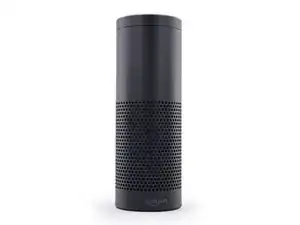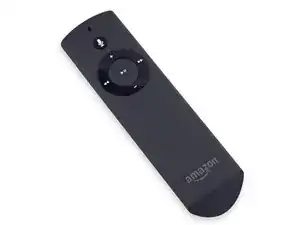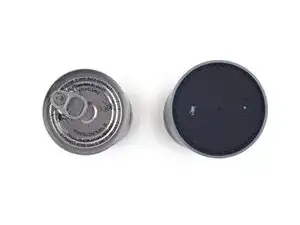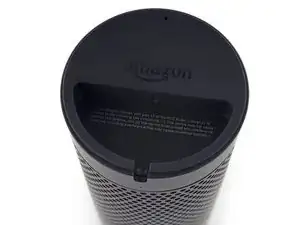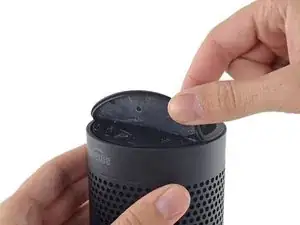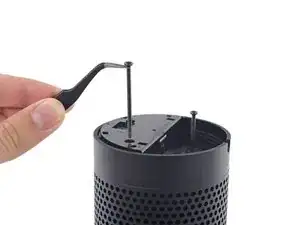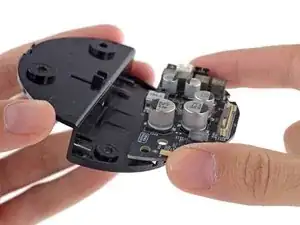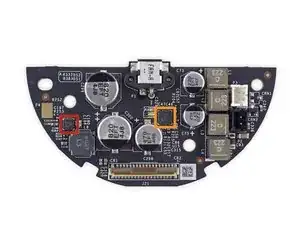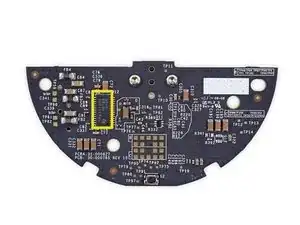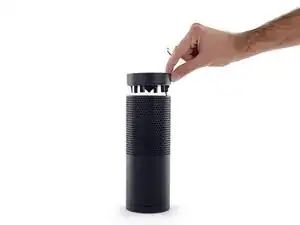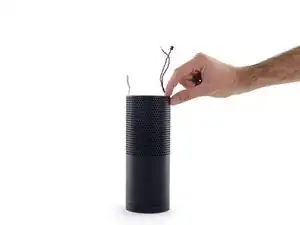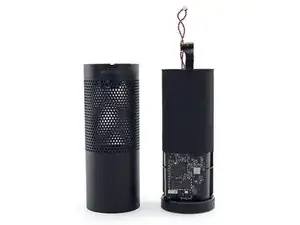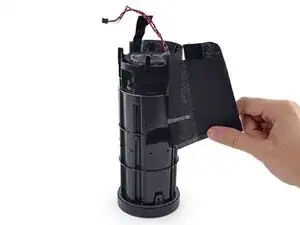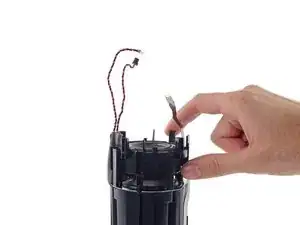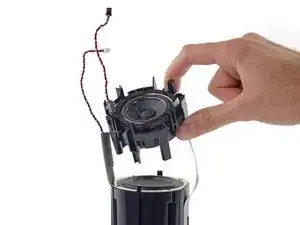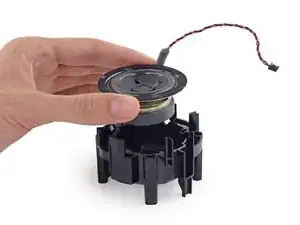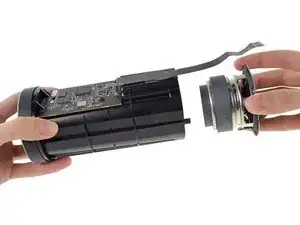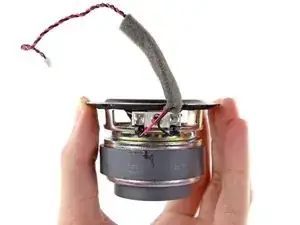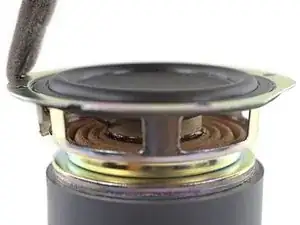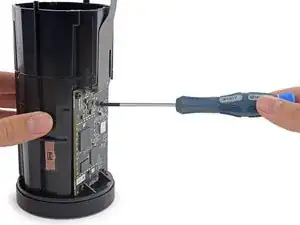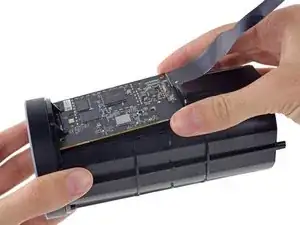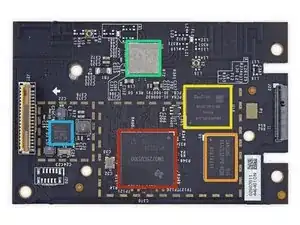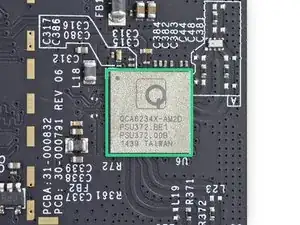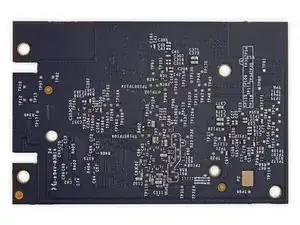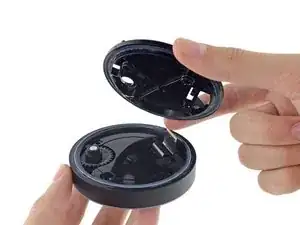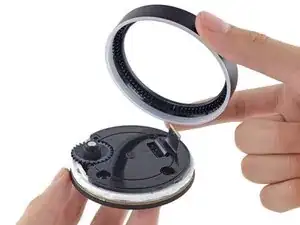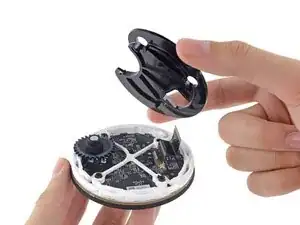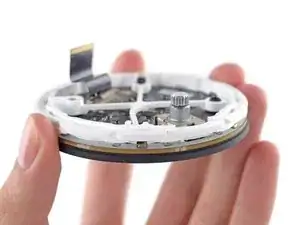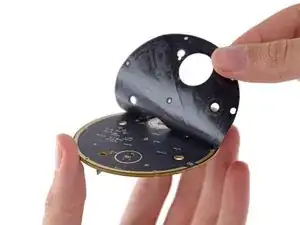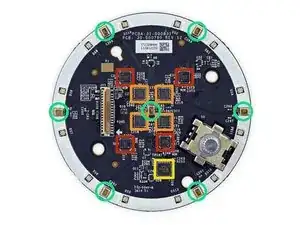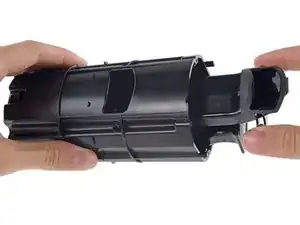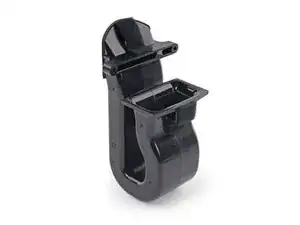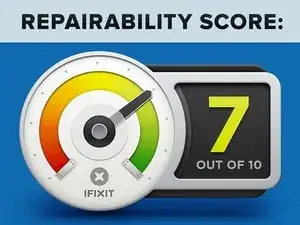Einleitung
The Amazon Echo aims to be your in-home personal assistant, in the form of a Wi-Fi connected tower speaker. Are smart speakers the next big thing? Follow us inside this new device for the inside scoop. Hey Alexa, it's teardown time.
Follow us on Instagram, like us on Facebook, or get the tl;dr on Twitter.
Werkzeuge
-
-
Amazon Echo: World's smartest speaker, or world's tallest Siri? Tech specs include:
-
2.5" woofer, with a reflex port to drop a little extra bass
-
2.0" tweeter
-
7-microphone array
-
Light ring volume adjustment
-
Remote control
-
-
-
Amazon sealed the Echo up tight, with nary a fastener in sight. Time to peel up the foot and take a look.
-
Four impressively long T10 screws hold the bottom stage of the Echo rocket in place. Thanks, Amazon, for a standard fastener that we're really good at removing.
-
The plate flips over, held in place by a data cable and speaker lines.
-
-
-
The power and speaker driver board lives on the bottom of the stack.
-
Texas Instruments TPS53312, likely an updated version of the TPS53311 3A Step-Down Regulator with Integrated Switcher
-
Texas Instruments TLV320DAC3203 Ultra Low Power Stereo Audio Codec
-
Texas Instruments TPA3110D2 15W Filter-Free Class D Stereo Amplifier
-
-
-
-
Echo's design continues to remind us of a rocket, with several stages stacked within an outer shroud.
-
-
-
With the outer housing removed, we find some vibration-dampening fabric swaddling the speakers.
-
It takes a skillful combination of knifery and peeling double-stick tape, but we eventually get the fabric off, exposing a sad-looking mouth and the start of our path to a free motherboard.
-
-
-
The tower of components that remains is starting to remind us of a certain dark fortress. We'll keep an eye out for anything suspicious.
-
Stage separation in 3..2..1..
-
Tweeter separated, and removed from its housing. Check out that magnet.
-
-
-
Final stage, ejecting the woofer from the
spacecraftmain body. -
This heavy duty woofer has an even heftier magnet than its tweeting twin.
-
The internals seem to feature a complex woven spider. Also known as a damper.
-
-
-
Here's what's powering the Echo:
-
Texas Instruments DM3725CUS100 Digital Media Processor
-
Samsung K4X2G323PD-8GD8 256 MB LPDDR1 RAM
-
SanDisk SDIN7DP2-4G 4 GB iNAND Ultra Flash Memory
-
Qualcomm Atheros QCA6234X-AM2D Wi-Fi and Bluetooth Module
-
Texas Instruments TPS65910A1 Integrated Power Management IC
-
-
-
Now for the fun part!
-
The volume dial contains the user-interactive bits: the top portion spins freely, using a greased-up gear to turn an encoder...
-
Pro tip: take the Echo out of its protective plastic covering before attempting volume level 10.
-
-
-
Popping off the final guard, the greased gear is free to go. The Echo's spinning input wheel is similar to that of the Nest Thermostat, but is implemented completely differently.
-
Around the edge of the wheel, we find the microphones responsible for hearing your commands (six on the perimeter, plus one in the center of the board), and LEDs used to indicate Alexa's acknowledgement.
-
-
-
We gently separate the LED/microphone board from the topmost plastic button cover.
-
Only a thin layer of precision-cut foam, complete with microphone mesh and plastic window covers, stands between us and daughterboard freedom.
-
Texas Instruments LP55231 Programmable 9-Output LED Driver (x4)
-
Texas Instruments TLV320ADC3101 92dB SNR Low-Power Stereo ADC (x4)
-
Texas Instruments SN74LVC74A Dual Positive-Edge-Triggered D-Type Flip-Flops
-
S1053 0090 V6 Microphone (x7)
-
-
-
And here we remove the
saxophonereflex port. -
Cantina song, anyone?
-
The strange shape takes full advantage of the limited space inside the Echo, while allowing Alexa to yell at you from across the room.
-
-
-
What a lovely layout! Here are all those Echo parts you've just now come to know and love.
-
With that, it's time for a repairability score.
-
-
-
Amazon Echo Repairability Score: 7 out of 10 (10 is the easiest to repair):
-
The speakers (the components most likely to fail) are replaceable.
-
Separating components across three circuit boards improves modularity.
-
Adhesive is used in two places—the rubber foot, and the fabric shroud. Removing the shroud requires a knife, and you'll need to tape it back together.
-
This is a fairly complex device—and with no repair documentation available, reassembly is especially difficult.
-
83 Kommentare
Is there a teardown of the remote itself?
gamin -
Excuse me but what is the power draw for the Echo? I run on solar power.
About 3 watts, 7 VA on standby. Not much more when playing music, maybe 4W/8VA.

